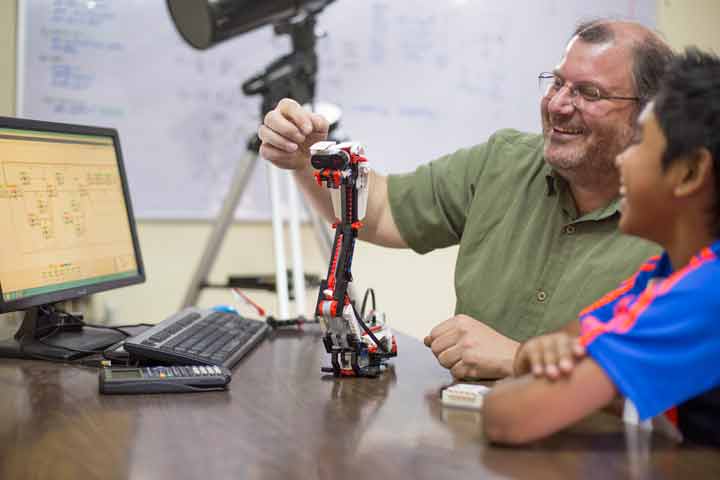
20 Sep The role of role models
Muscle memory
Going to the gym everyday has been a ritual of mine for more than 30 years. 25 years ago, when one of our daughters was still very young, I set up a small gym in the basement of our house. Every evening I’d make my way down the stairs to work out – followed by a little two-year old who wanted to join in! As soon as I turned on the music and started my routine, she did the best she could to follow along.
Some months later, I was picking my daughter up from one of the first birthday parties she ever attended. When I met the mother of the little girl whose birthday it was, she looked surprised. “You won’t believe what happened,” she said, “as soon as we starting playing music for a game of musical chairs, your daughter dropped to the floor and started doing sit-ups!”
Called 'mirror neurons', scientists now believe that they are what enables a child to learn to walk, to talk, and to behave like their parents by copying their actions.
In the 1990s, Italian researchers found that certain neurons in the brains of monkeys responded when the monkeys reached for an object. What is really fascinating is the researchers discovered that similar neurons responded in the brains of other monkeys who were only watching what was happening. These neurons are a special type of brain cell which fires when we perform an action and also when we watch someone else perform the same action. Called ‘mirror neurons’ scientists now believe that they are what enables a child to learn to walk, to talk, and to behave like their parents by copying their actions. Most interesting, these mirror neurons may also play a role in how we learn to empathize with other people. Eminent Psychologist, Dr V.S. Ramachandran, has called the discovery of these unique neurons one of the “single most important unpublicised stories of the decade.”
Learning by example
This discovery affirms what good parents and the best teachers have known for generations – that children learn best by example. As Carl Jung said, “children are educated by what the grown-up is and not by his talk.”
In the 1950s, Dorothy Nolte, a writer and family counselor, summed up this principle beautifully in a poem which is now famous for its simple explanation of a profound truth – one which is enshrined in Woodstock’s educational philosophy:
If children live with criticism, they learn to condemn.
If children live with hostility, they learn to fight.
If children live with fear, they learn to be apprehensive.
If children live with pity, they learn to feel sorry for themselves.
If children live with encouragement, they learn confidence.
If children live with tolerance, they learn patience.
If children live with praise, they learn appreciation.
If children live with acceptance, they learn to love.
Over the years, I’ve come to the conclusion that it is as role-models and examples we exercise the single most significant influence on the development and well-being of young people. As the old adage puts it, “Your actions are shouting so loudly I can’t hear what you’re saying!”
Dr Jonathan Long, Principal






No Comments